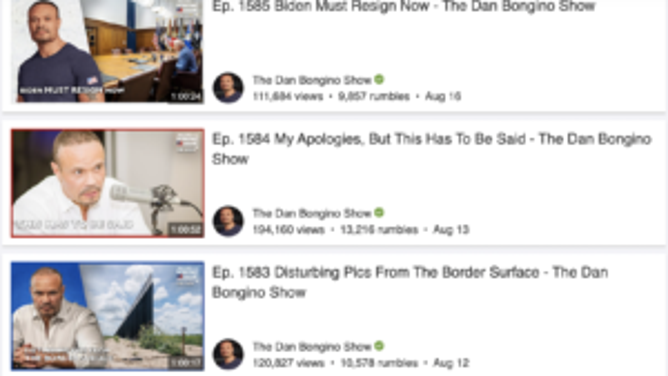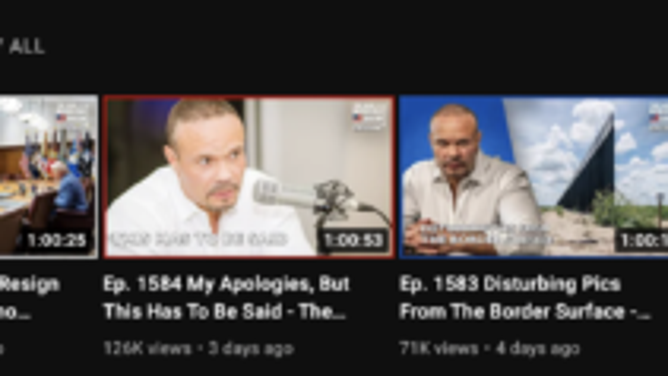Rumble and Substack Plan To Change Media Industry
The growth of Substack has been one of the most eye-opening developments in media over the past 18 months. The subscription platform allows writers to ask questions, challenge the establishment, and even think independently. In short, Substack enables journalists to be journalists. However, it also has its limitations.
Because Substack is a digital media space exclusively designed for writers, there is demand for a video counterpart. There will be a Substack of video at some point, and right now, Rumble is the frontrunner.
Rumble is a fast-growing rival to YouTube but without censorship. Rumble can be to YouTube what Parler could have been to Twitter before Amazon decided to remove Parler from its servers. Since last summer, Rumble has grown from 1 million active users to 30 million today. And last week, Rumble made a splash by adding former U.S. congresswoman Tulsi Gabbard and journalist Glenn Greenwald to its platform.
Rumble would be an ideal complement to Substack. There's a divide between consumers who want only to read content and those who seek merely video clips. It's crucial that media members are multi-platformed in 2021. Those who limit themselves to only one medium put an unnecessary ceiling on their career.
Rumble will never catch YouTube in terms of reach, users, or profit. However, individual personalities don't need Rumble to record the same overall unique visits a month. Media hosts need just a functional, uncensored, monetizable landing space that viewers can access easily.
Dan Bongino, who has an ownership stake in Rumble, links his Rumble videos on other social media platforms. Because of these promoted links, more users now consume Bongino's daily show on Rumble than they do on YouTube:


To combat demonetization from YouTube, Bongino has sent over half of his YouTube viewers to Rumble in less than a year. As Bongino continues to promote Rumble, expect that margin to widen in Rumble's favor.
In the past, even star media personalities had to tolerate overbearing executives, but now those with an audience no longer have to.
Since 2020, Glenn Greenwald has published exclusively on Substack with an impact that exceeds that of most writers at major media corporations.
The Financial Times estimates that 20,000 to 40,000 users subscribe to Greenwald's Substack at $5 a month. While that range is large, it means Greenwald makes between $80,000 and $160,000 a month, once Substack takes its standard 10 percent cut.
Matt Taibbi, Matthew Yglesias, Heather Havrilesky, Roxane Gay, Andrew Sullivan, and Bari Weiss have also seen considerable success on Substack. Writers on Substack like Greenwald can earn solely from subscriptions -- with a fee -- or select a pre-determined rate. Many of them could now look to expand their independence, reach, and monetization on Rumble.
"I became convinced that Substack is genuinely committed to free speech principles once I moved here, and I am now convinced that Rumble is as well," Greenwald says.
"here are large numbers of people (particularly but not only younger people) who do not and will not consume news by reading articles but will only watch videos, and this will enable the journalism we do here to reach far more people."
While no one may top Greenwald's reach, the trickle-down effect for others should be lucrative. According to the Washington Post, Rumble is paying hundreds of thousands of dollars to well-known personalities -- including Greenwald and Gabbard, presumably -- to join the platform. Moreover, Rumble offers other hosts a 50% revenue share with no license fees.
As I explained regarding Rachel Maddow's impending free agency, the future of media is not in finding a network, but in finding several different revenue sources. The Post notes that Rumble's high-profile users can earn money through various avenues.
"The Rumble-funded creators will be free to post their videos elsewhere, including YouTube, after a two-hour Rumble-exclusive window. They will also be able to make money through video advertisements and other monetization features Rumble is now building, similar to those found on YouTube and Twitch, including allowing viewers to pay extra to make their live-chat comments bigger."
Skeptics of Rumble and Substack fear that app store providers like Apple and Google could pressure the platforms to obey unreasonable censorship commands to remain available on iPhones and Androids. While possible, Rumble and Substack survived Jan. 6, even as big tech censored other outlets like Parler. To their credits, both Rumble and Substack have thus far thread that needle carefully and maintained a free speech identity without alarming the tech tyrants.
Most media trends are daunting for those in the industry. In nearly every facet, the media industry is worse off now than it was a decade ago. There is one exception though: open resources such as Rumble and Substack that allow people to create their own content.
Journalists and media personalities no longer need to associate themselves with major publications like The New York Times or NPR to gain a loyal audience. Now, it's about the content. The best content is found on platforms that allow their talents to be themselves, not an extension of their boss. There are still a few media companies worth working for, and Rumble and Substack could soon sit atop the list.
Follow Bobby Burack on Twitter, @burackbobby_.